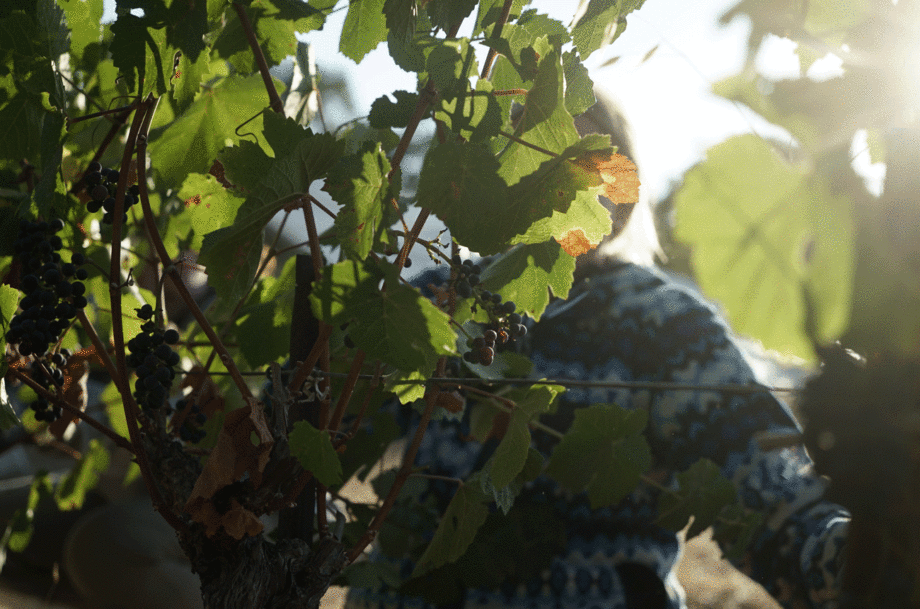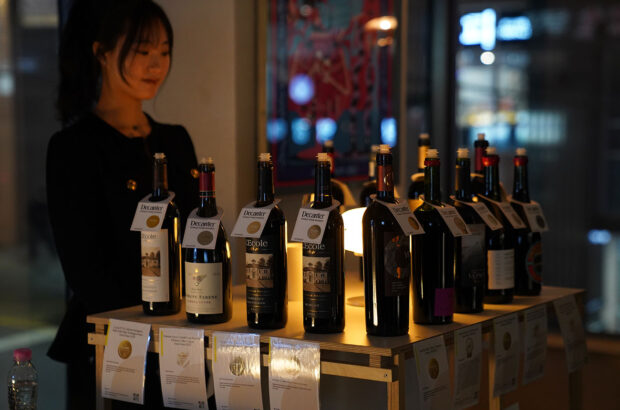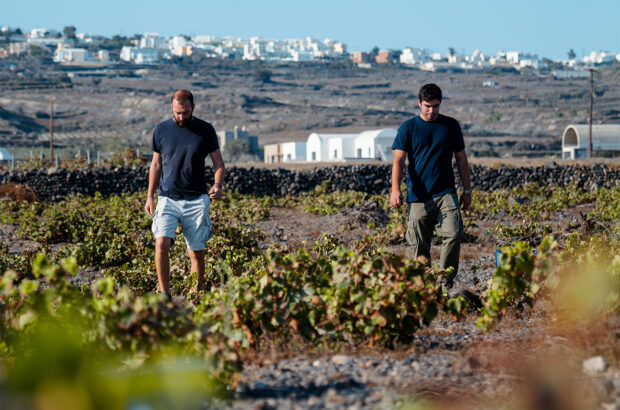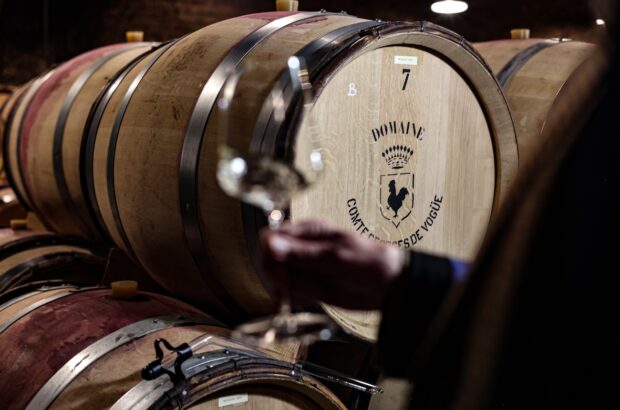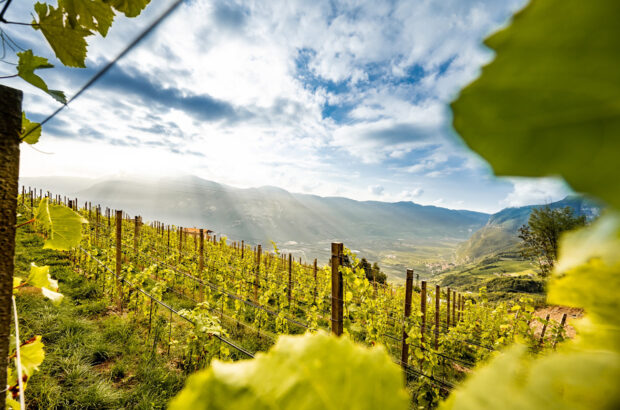An unusually cold and foggy July marked one of the chilliest midsummers in decades around Sonoma, Napa and much of the Bay Area, leaving some growers apprehensive about potential delays.
Then came August, with a modest warm-up that was just enough to push grapes towards a slow, steady ripening, keeping many sites a week or more behind last year’s pace. The delay has been noted, though it is not yet worrisome.
Adding to the usual unease of harvest season, the Pickett Fire near Calistoga – still burning as of 2 September, though nearly 90% contained – has raised concerns about potential smoke taint, even as most vineyards and wineries escaped direct damage.
Beyond the fire zone, growers from north to south describe the vintage with cautious optimism: the signs point to real potential, but the consensus is that this is a year that demands patience, with the final chapter yet to be written.

Derek Baljeu from Sonoma County’s Knights Bridge toasts the beginning of vintage 2025 with cellar master Rafael Gonzalez. Credit: Mike Larson.
Sonoma County
‘This season has carried a quieter tempo. Where 2024 was marked by early heat and an accelerated pace, 2025 felt like it kept its foot on the brake for much of summer. It’s a season that doesn’t want to be rushed,’ said Derek Baljeu, winemaker at Knights Bridge. The producer brought in the estate’s first Sauvignon Blanc on 28 August while Cabernet Sauvignon and other red varieties in Knights Valley still await.
On the West Sonoma Coast, some wineries began picking Pinot Noir this week, though the bulk of the harvest is still to come. What is slowly coming in, and what remains on the vines, looks promising.
Winemaker Catherine Kistler of Occidental said that the long, fog-laden summer required extra canopy management to counter the humidity of the persistent marine layer. She added however that the balance of the vines and quality of the grapes so far reminds her of 2023 – a remarkable vintage now being bottled and released – when extended, gentle ripening delivered ‘incredible intensity of flavour at low sugar levels’.
Jasmine Hirsch, farming her family’s vineyards in Cazadero, echoed the sentiment: ‘The long, lovely period from start to veraison to now usually foretells high quality.’
In other parts of Sonoma County, harvest is only just stirring. At Centennial Mountain, the first reds are now in tank, while Rodney Strong expects its first fruit from both the Russian River and Alexander Valley in the first week of September or so.
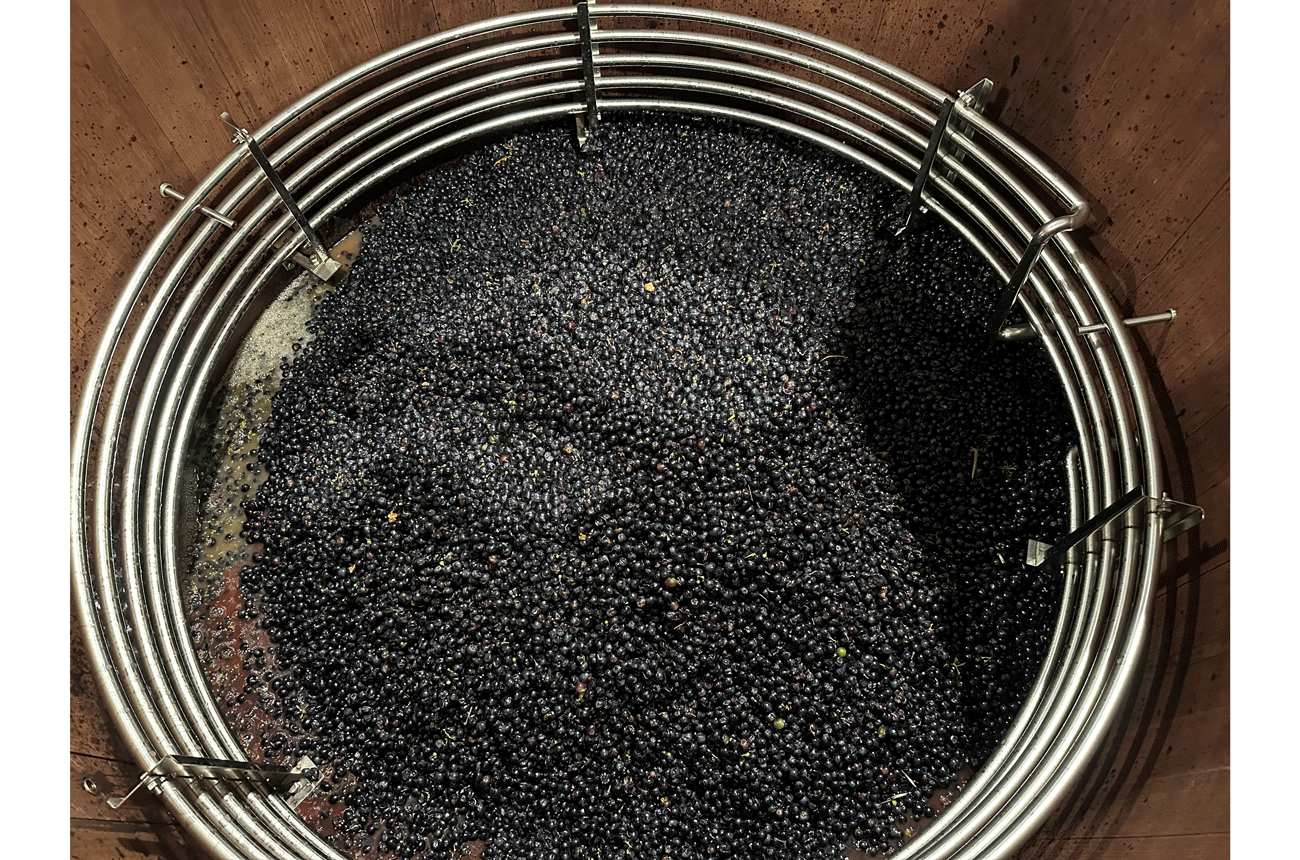
Barbera is the first red to tank at Centennial Mountain. Credit: Centennial Mountain
Mendocino County
Further north in Mendocino, the pace has been even slower. Sparkling houses such as Roederer Estate, Scharffenberger and Lichen are already in full swing, but still wine is some way off. Anderson Valley Pinot Noir isn’t expected until the second or third week of September, while fruit from Mendocino Ridge may not be ready until 1 October.
‘Yields are a little lower than average on the west side of Mendocino Ridge, especially in our estate,’ said Jason Drew of Drew Wines, though he added that the lighter set avoided the severe shatter seen in previous years thanks to relatively fog-free conditions during flowering. In some of Drew’s younger blocks planted in 2022, cold soil temperatures revealed nutrient deficiencies – particularly iron, potassium, and phosphorus – with Chenin Blanc showing these most clearly.
By contrast, older dry-farmed blocks appear balanced and thriving, with healthy shoot and leaf growth. Conditions have also been breezier than usual, which, as Brad Jonas from Minus Tide observed, helped alleviate mildew and mould pressure: ‘I’m seeing pristine fruit everywhere, so I’m really happy with the quality.’
Napa Valley
Napa Valley has also seen a largely even and cool summer, conditions that required careful canopy management just after fruit set to limit pyrazines in Cabernet Sauvignon and other Bordeaux varieties, explained Barrett Anderson, winemaker at Spring Mountain. But the fire in the Calistoga area has been the most disruptive moment of the season so far – a genuine scare for many producers, with the full extent of fruit losses to smoke damage still to be assessed.
For Spring Mountain, which lost more than half its vineyards – approximately 40 hectares of vines – along with its historic 1870s La Perla winery during the 2020 Glass Fire, the memory remains raw. Anderson noted that one of the Howell Mountain vineyards may have been exposed to smoke this year: ‘We will be sending samples to labs for testing.’
He added that the season is far from secure, with forecasts predicting temperatures in the high 90s this week and red harvest still weeks away: ‘I’m still worried about some late-season heat spikes.’
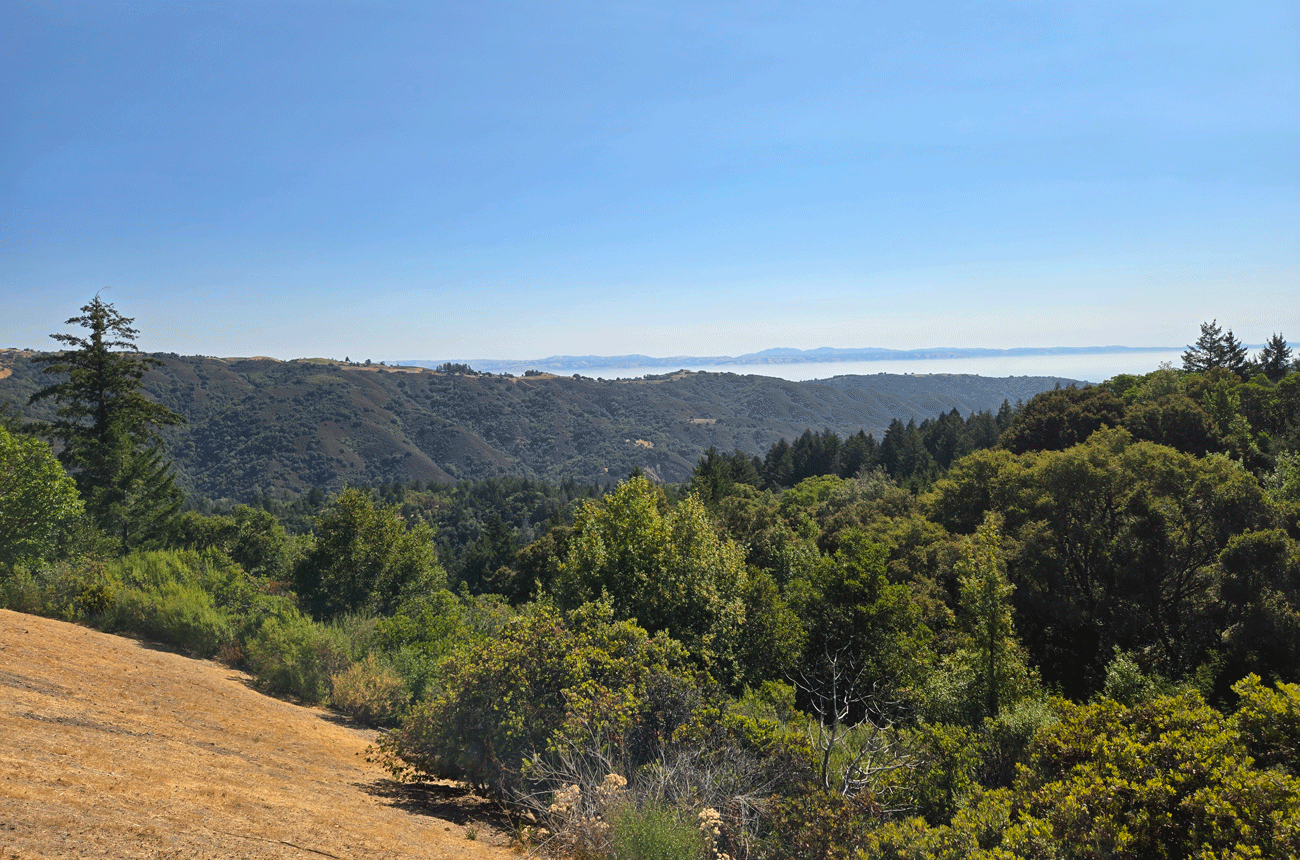
The view east from the Santa Cruz Mountains’ Rhys Vineyards. Credit: Clive Pursehouse
Santa Cruz Mountains
In the Santa Cruz Mountains, the season has been a ‘yo-yo’, refusing to run in a straight line, according to Jeff Brinkman, director of winemaking at Rhys.
A warm spring pushed budbreak early, only for July to stall everything with weeks of cold and fog, similar to other parts of the state; August then offered just enough warmth to push vines back on track.
‘The region now sits behind 2024 but still ahead of the long, drawn-out 2023 harvest, Inland and higher-elevation sites such as Alpine and Skyline are progressing normally. At the same time, cooler, coastal vineyards like Horseshoe remain late, with smaller clusters and lighter yields,’ Brinkman said, adding that even so, fruit quality is encouraging: acids are high, sugars restrained, and stems well lignified, making 2025 an especially encouraging year for whole-cluster fermentations. ‘So far the fruit is pristine, but September will decide whether this becomes a truly classic vintage for the mountains.’
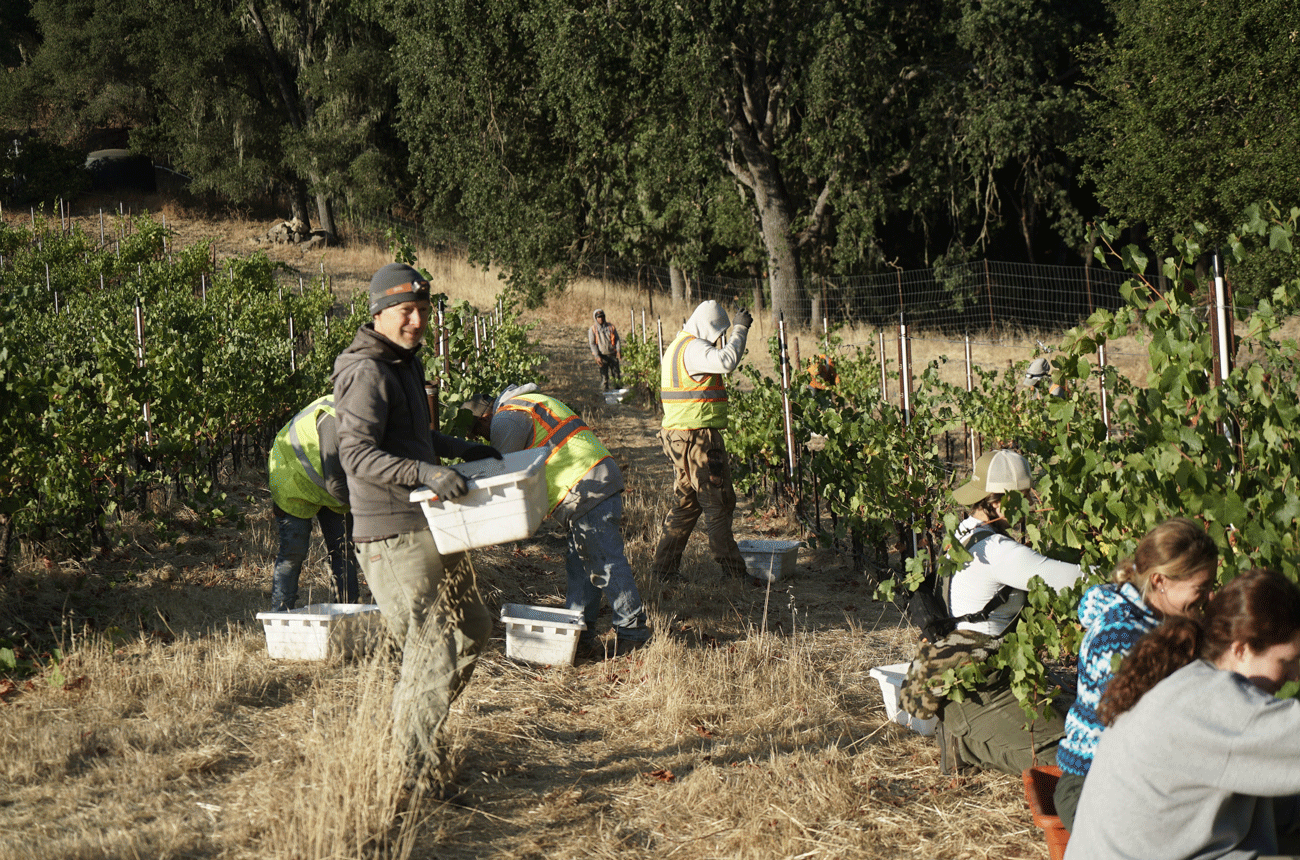
Harvest is underway at Tablas Creek. Courtesy: Tablas Creek
Paso Robles
Paso Robles has had what Jason Haas of Tablas Creek described as a ‘benign year – no real challenges’, a welcome change after several more extreme recent vintages. The season is running about a week behind 2024, but essentially back on the region’s long-term average rhythm. Yields, which came in light last year, have rebounded to normal levels, with vines setting a healthy crop that appears neither excessive nor stressed.
‘Fruit chemistry is encouraging, with acids holding and flavours concentrating in balance thanks to the absence of heat spikes or prolonged drought stress. So far, it feels like the kind of year you hope for but don’t always get in Paso,’ Haas said.
Labour and market pressure
Even with the weather largely cooperating, the 2025 harvest faces other strains as well. Quality looks strong, but growers caution that abundance doesn’t come without a cost.
‘The bigger concern this year isn’t in the vineyard but in the market,’ said Haas, noting that oversupply and softer sales have been heavily impacting Paso producers.
Morgan Twain-Peterson of Bedrock Wine in Sonoma put it more starkly: ‘I think everyone is optimistic about quality while also hoping for a moderate to low crop as we all continue to rightsize to demand. There is a lot of unsold fruit right now, which is a real bummer for a lot of growers.’
Labour, too, has been unsettled. Baljeu at Knights Bridge pointed to visa denials that thinned the pool of overseas interns. ‘Some we were expecting dropped out,’ he said, and ‘farmworkers are nervous, and it shows’. At Hamel Family Wines in Sonoma, visa issues kept the usual Chilean interns from joining the harvest crew this year.
Haas saw the same absence from another angle: ‘We didn’t have a single intern apply from outside the United States. We usually have several. That’s as good an indicator as I can think of right now that people in other wine-producing countries don’t look at the United States as someplace they want to spend time.’


